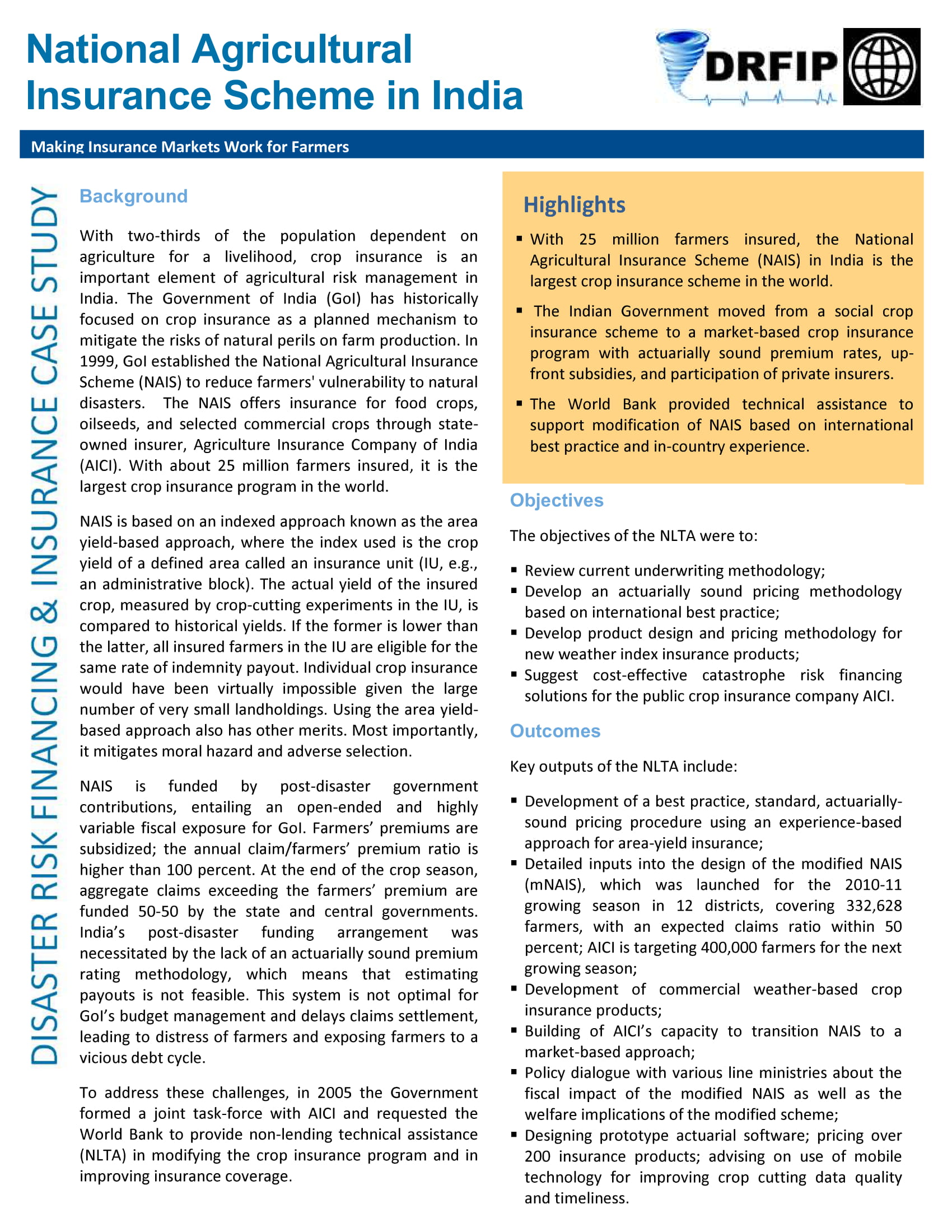The Government of India (GoI) has historically focused on crop insurance as a planned mechanism to mitigate the risks of natural perils on farm production. In 1999, GoI established the National Agricultural Insurance Scheme (NAIS) to reduce farmers' vulnerability to natural disasters. The NAIS offers insurance for food crops, oilseeds, and selected commercial crops through state-owned insurer, Agriculture Insurance Company of India (AICI). With about 25 million farmers insured, it is the largest crop insurance program in the world.
NAIS is based on an indexed approach known as the area yield based approach, where the index used is the crop yield of a defined area called an insurance unit (IU, e.g., an administrative block). The actual yield of the insured crop, measured by crop-cutting experiments in the IU, is compared to historical yields. If the former is lower than the latter, all insured farmers in the IU are eligible for the same rate of indemnity payout. Individual crop insurance would have been virtually impossible given the large number of very small landholdings. Using the area yield based approach also has other merits. Most importantly, it mitigates moral hazard and adverse selection.

